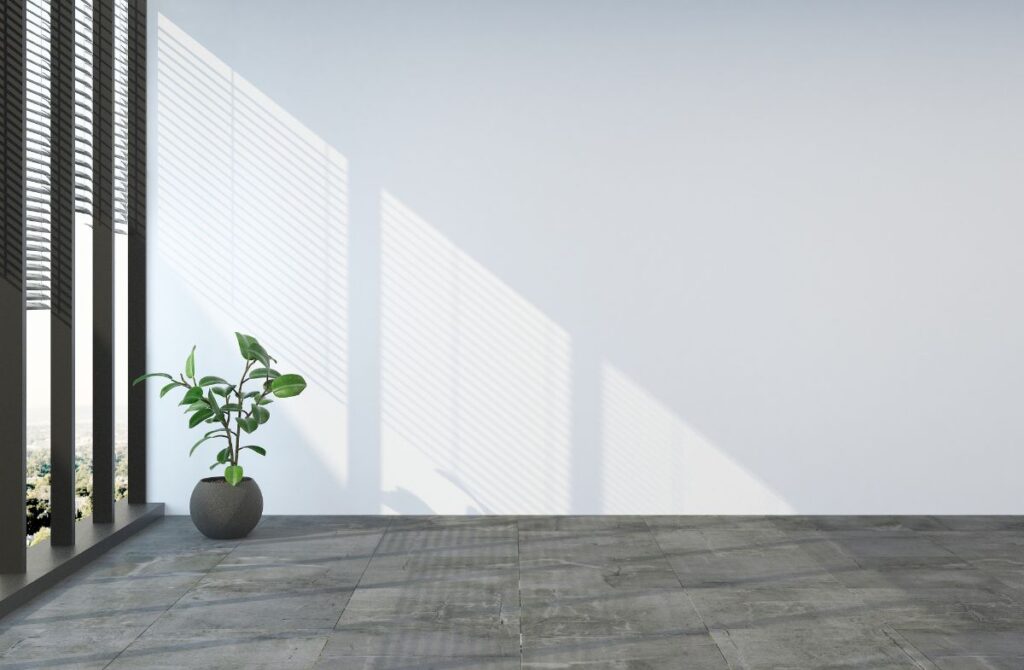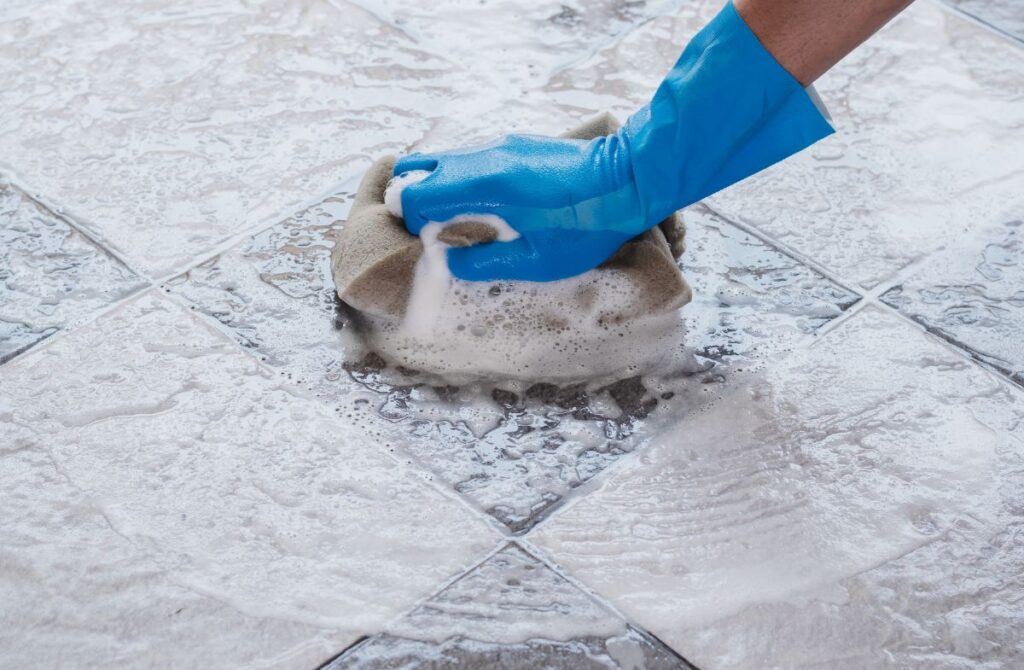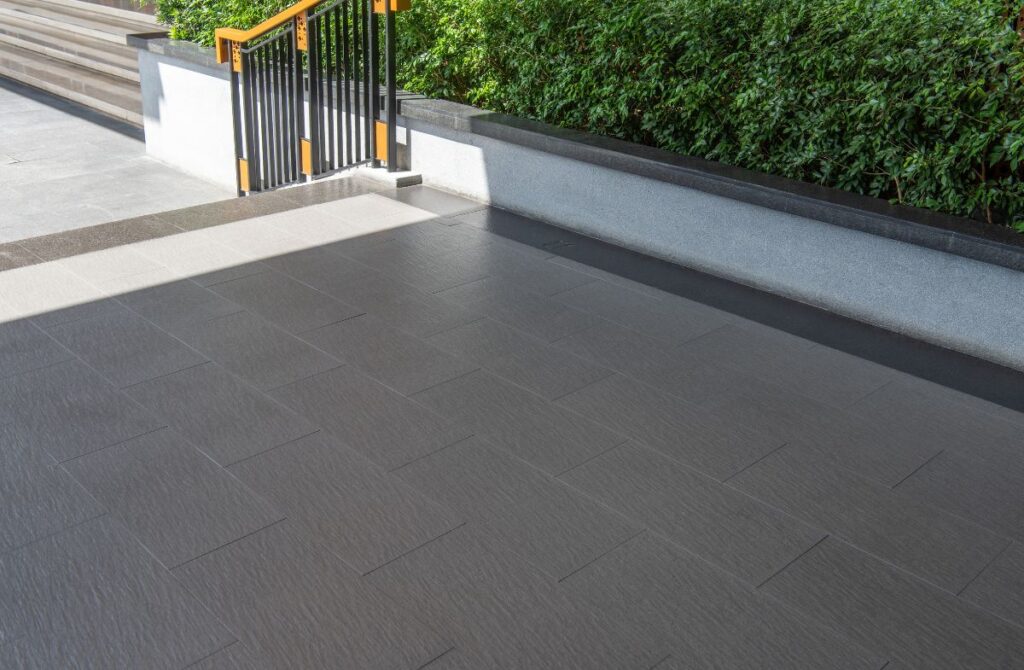
Tiling the concrete surfaces around your home, such as your balcony, verandah or garden path, is a great way to create an aesthetically pleasing look and feel to your outdoor area for both yourself and your guests.
Unfortunately, when the concrete surface underneath is not properly waterproofed before tiling, excess moisture can soak into your tile screed and the grout around them, causing salts and other minerals from the screed and concrete below to travel up to the surface. Once the moisture evaporates, it leaves behind a crystalline, salty, scuffed look on your tiles.
This is known as efflorescence, and it is a common problem for many households, often occurring in areas prone to excessive moisture.
Today, we’re going to explain a smart way to repair your tiled concrete surfaces after efflorescence has occurred and how to prevent it from happening again.
First, let’s discuss removing and retiling vs tiling over the top
When efflorescence occurs on your tiled surfaces, most tradespeople will suggest pulling the existing tiles up to properly re-waterproof the concrete below and top of the screed before tiling the area once again.
However, this is a costly exercise – not to mention an unnecessary one.
That’s because, with the right waterproofing products, and assuming a high enough step down from the doorway, you can easily apply a protective waterproofing layer across the top of your existing tiles that will then allow you to tile straight over the top, saving you countless hours and dollars in the process.

How to prepare your tiled surface for waterproofing
Before you start applying your waterproofing product, you want to ensure that you take care of the existing efflorescence on the surface so that it doesn’t continue to cause damage to the integrity of the substrate below.
While there are several methods to do this, the best way is:
1. Use a strong bristled brush to scrub the salt and minerals off the surface of your tiles.
2. Sponge the surface with a 1:20 solution of White Vinegar and Water to help remove any remaining efflorescence on or below the surface.
3. Wipe the entire area down with a wet cloth and leave the surface to dry thoroughly.
Alternatively:Spray Efflorescence Rid onto the surface using a low-pressure sprayer, whereupon light foaming will occur, an indication that the Efflorescence Rid is dissolving the efflorescence. It may require 2,3 or more passes of Efflorescence Rid depending upon the amount of efflorescence in the substrate.Once satisfied that the efflorescence is removed, rinse the surface with water,Don’t rinse with water after each application of efflorescence rid, only after the last application.
Once the surface is completely dry, you can then move on to waterproofing your current tiles and then tiling over the top, directly onto the waterproofing membrane.
How to waterproof your tiled concrete surface
Drizoro offers a range of products that can help with waterproofing many of the surfaces around your home. For tiled surfaces, you are going to need either Maxseal Flex or Maxseal Flex M.
Below is a step-by-step guide to waterproofing your tiled concrete surface. Follow each step closely to ensure the successful adhesion of your waterproofing product.
- Before you begin, ensure your surface is clean, dry and free of any loose materials.
- Place a 90-degree waterproof angle along the length of the mortar bed to help prevent any moisture from travelling to the leading edge of your concrete slab.
- Thoroughly wet the surface, then brush apply the first coat of Maxseal Flex or Maxseal Flex M over your scuffed tiles.
- Allow Maxseal Flex to cure for 14 hours. If you’re using Maxseal Flex M, allow 6 hours for curing.
- Once the first coat is cured, thoroughly wet the surface again, then brush apply the second coat of Maxseal Flex or Maxseal Flex M over your first coat.
- Allow the two coats of Maxseal Flex to cure for a total of 7 days. Again, if you’ve used Maxseal Flex M, allow 3 days for curing.
- Once the surface is cured, you can begin to retile directly over your existing tiles.
And that’s it!
Following these steps, your tiled surfaces will now be adequately waterproofed and ready to be tiled over.
The best part about Maxseal Flex or Maxseal Flex M is that, when correctly applied in the way above, the tiling glue can then be applied directly to it. Tiling glue adheres easily to Maxseal Flex or Maxseal Flex M so you have a strong, waterproofed surface to tile upon.

The right waterproofing solution will stop efflorescence in its tracks
Properly waterproofing your tiled concrete surfaces will help to protect the area from moisture and prevent efflorescence from reoccurring in the future.
Of course, if you’d like further guidance on the best waterproofing products to use on your tiles, speak to your local Australian waterproofing specialists.
Get the right waterproofing solutions for your tiled surfaces with SWP
At Scientific Waterproofing Products, our team is here to provide you with the right waterproofing for your unique situation. We offer a wide range of Drizoro cement-based waterproof coatings for all of your maintenance and restoration requirements.
If you’ve got any questions or issues around waterproofing your tiled concrete surfaces, or you’d like to find out which product is best for your needs, contact us today! You can also check out a list of local Drizoro resellers and applicators here.
As always, SWP is committed to providing the right waterproofing solution for any water-related problem or application.